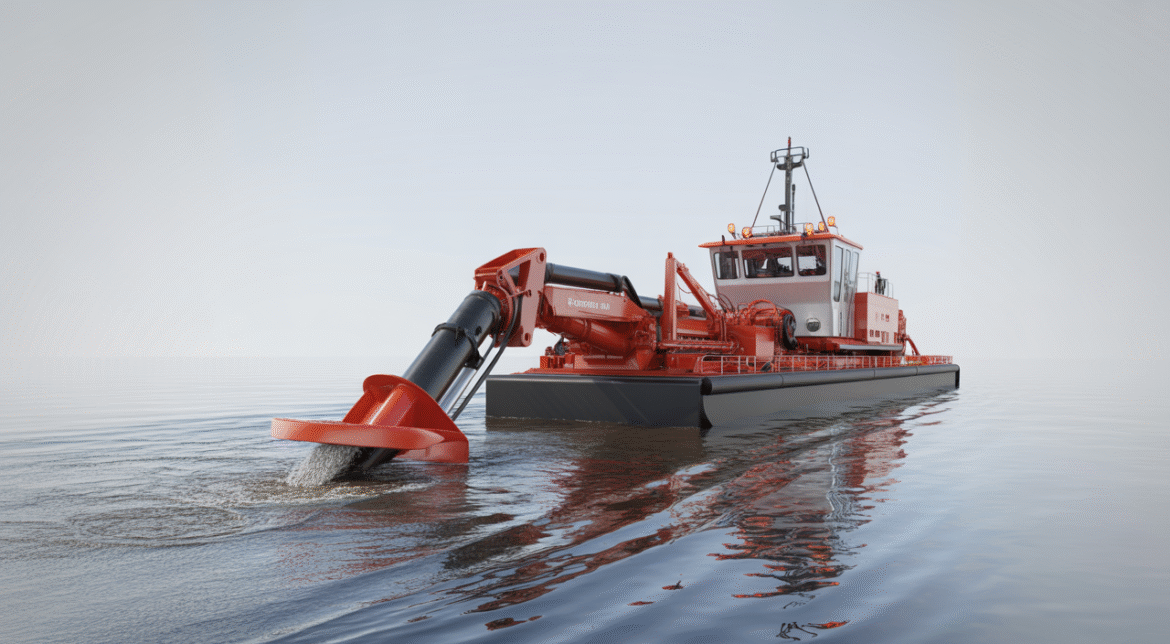Dredging is a crucial process across various industries. It helps maintain waterways, supports construction, and aids environmental remediation. Choosing the right equipment and, more importantly, the right dredge equipment provider is essential for project success. This guide will walk you through the key considerations to ensure you make an informed decision.
Selecting a dredge manufacturer can feel overwhelming. With so many options and technical specifications, knowing where to start is tough. But don’t worry! We’ll break down the process into simple steps. This guide provides a clear overview of what to look for when partnering with a manufacturer for your dredging needs.

Whether you’re involved in environmental cleanup, mining, or large-scale construction, understanding the nuances of dredging equipment is vital. Let’s dive into what dredging entails and why picking the right dredging equipment matters.
What is Dredging and Why is it Important?
Dredging is essentially underwater excavation. It involves removing sediment and debris from the bottom of bodies of water. This could include rivers, lakes, harbors, and coastal areas. The material is then relocated or disposed of.
Why is this important? Well, dredging serves multiple vital functions:
- Maintaining Navigable Waterways: Dredging ensures ships can safely travel by removing obstructions and deepening channels.
- Supporting Construction Projects: It’s often necessary for building docks, bridges, and other structures in or near water.
- Environmental Remediation: Dredging can remove contaminated sediments, cleaning up polluted areas.
- Mining Operations: It’s used to extract valuable minerals and resources from underwater deposits.
Types of Dredges: A Comprehensive Overview
Different dredging projects require different types of equipment. Here’s a look at some common dredge types:
Cutter Suction Dredges
These dredges use a rotating cutter head to loosen material. A suction pump then draws the mixture of sediment and water up through a pipeline. Cutter suction dredges are versatile and can handle various materials, making them a popular choice.
Pros: Effective for many soil types, high production rates.
Cons: Can be expensive, requires skilled operators.
Ideal Applications: Channel deepening, land reclamation.
Auger Dredges
Auger dredges utilize a rotating screw-like auger to collect sediment. They’re often used in shallower waters and for more precise dredging tasks. These are great for projects that need accuracy and less disturbance to the surrounding environment.
Pros: Good for precise work, less turbidity.
Cons: Lower production rates compared to cutter suction dredges.
Ideal Applications: Environmental cleanup, shallow water dredging.
Hydraulic Dredges
Hydraulic dredges use water jets to agitate and suspend sediment. A pump then removes the slurry. These are particularly effective in areas with loose, unconsolidated materials.
Pros: Efficient for loose materials, relatively simple operation.
Cons: Not suitable for harder materials, can create turbidity.
Ideal Applications: Sand and gravel removal, maintenance dredging.
Key Factors to Consider When Choosing a Dredge Manufacturer
Selecting the right equipment provider involves several important considerations:
- Experience and Expertise: Look for a manufacturer with a long track record of successful projects.
- Product Quality and Reliability: Ensure the dredges are built to withstand tough conditions and offer long-term performance.
- Customization Options: Can the manufacturer tailor the dredge to your specific project requirements?
- After-Sales Support and Service: What kind of support do they offer after the purchase, including maintenance and repairs?
- Price and Total Cost of Ownership: Consider not just the initial price, but also the ongoing costs of operation and maintenance.
Why Choose a Reputable Manufacturer
Choosing a reliable manufacturer has many benefits, including easy access to dredge equipment providers and other essential components. This accessibility ensures your dredging operations run smoothly and efficiently. These components are vital for maintaining optimal performance and reducing downtime.
Dredging Regulations and Permits: A Brief Overview
Dredging operations are often subject to environmental regulations. You’ll likely need permits from local and national authorities. A good equipment provider can help you navigate this process.
These regulations aim to minimize the environmental impact of dredging. This includes controlling turbidity, protecting aquatic habitats, and properly disposing of dredged material.
A knowledgeable manufacturer can advise you on best practices for compliance. They can also provide equipment designed to minimize environmental disturbance.
Frequently Asked Questions (FAQs) About Dredge Manufacturers
Here are some common questions people ask when choosing an equipment manufacturer:
- What type of dredge is best for my project? The answer depends on the material you’re dredging, the water depth, and environmental considerations. A manufacturer can help you assess your needs.
- How much does a dredge cost? Costs vary widely based on the type, size, and features of the dredge. Get quotes from multiple manufacturers to compare.
Conclusion
Choosing the right dredge manufacturer is a critical decision that can significantly impact the success of your project. Consider their experience, product quality, customization options, and after-sales support. Don’t forget to factor in dredging regulations and permitting requirements.




